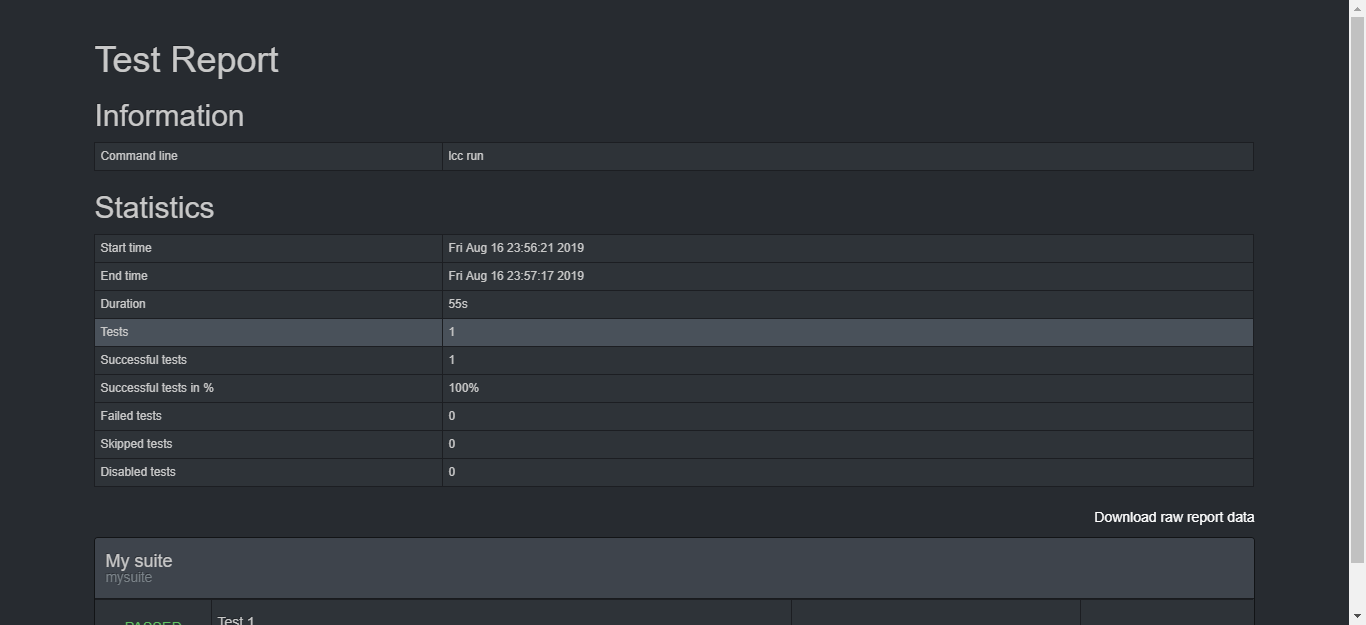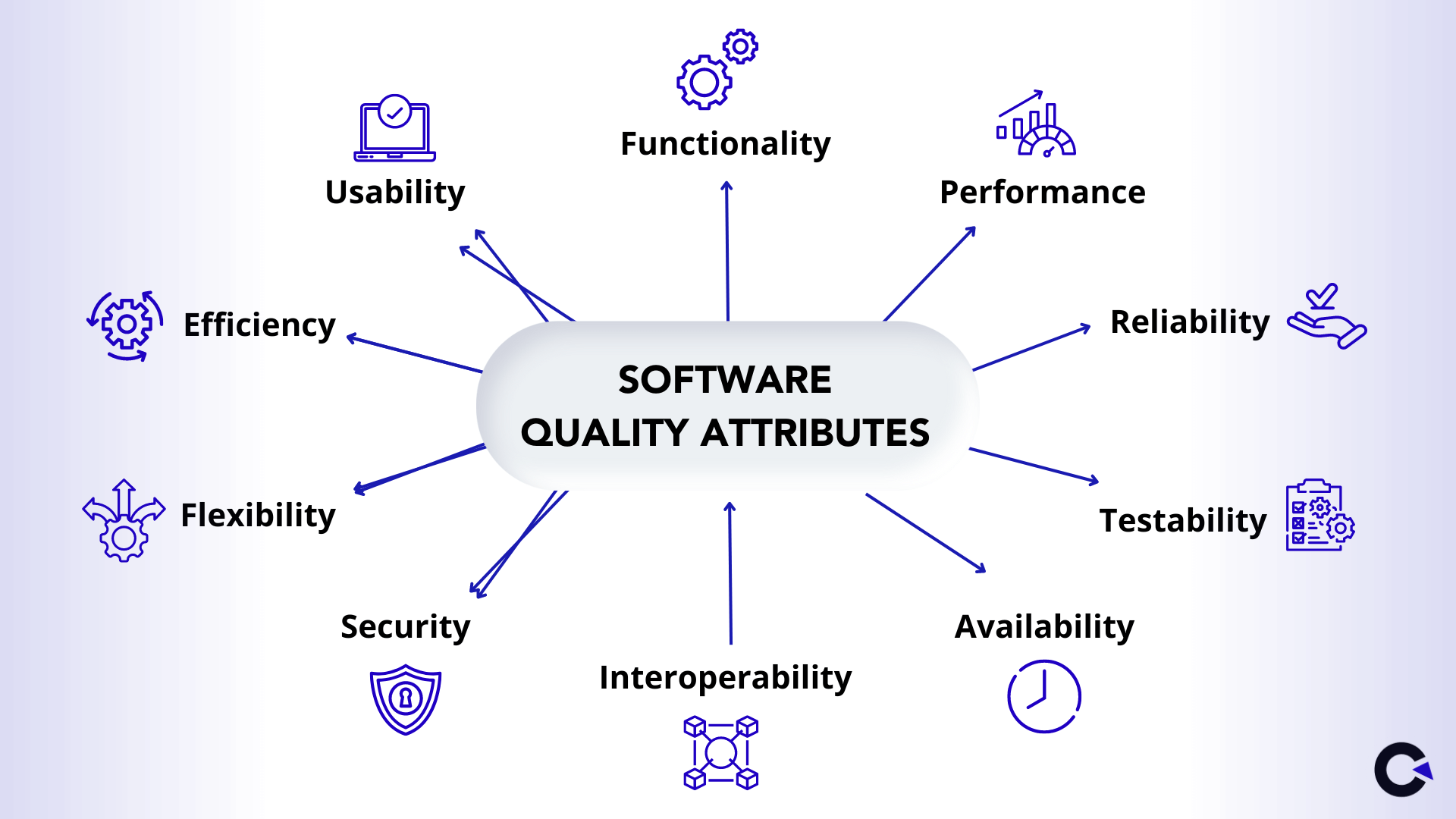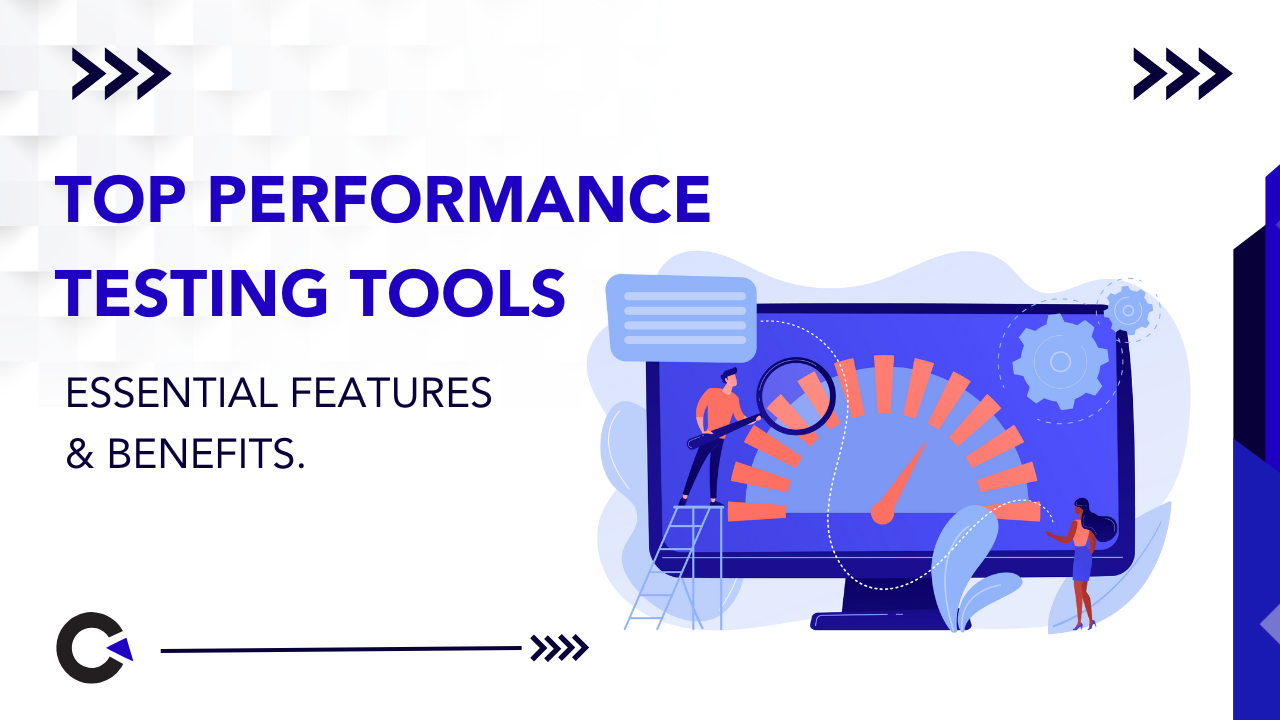
by admin | Aug 6, 2019 | Software Testing, Fixed, Blog |
The test summary report outlines the summation of software testing activities and final testing results. Software testers are required to communicate testing results and findings to project stakeholders on the completion of a testing cycle. The content of the test summary report drives decisions for the release of the software. Revision history, distribution list, document review, project description, testing scope, functionalities and features tested in a cycle, test execution details, test coverage, and results, defect matrix, and outstanding results represent the content in a test summary report.
When to Create a Test Summary Report
The report would be created at the close of software testing cycles. In certain cases, testing engineers working on behalf of a QA company can perform a single round of testing before generating a report. Freelance testers can generate and submit the report to spotlight defects in the ‘open’ statuses. The report serves as a guide to help clients with information on the overall ‘health’ of a software application and enable the planning of corrective measures. For instance, a report may convey certain defects repeatedly occurring through several testing cycles. The recommendation from the tester may include the allocation of a higher number of resources to track and analyze the defects, and also a note for the software development team.
What to Include in the Test Summary Report
Precision and relevance form the basis of an informative test summary report. Testing engineers working on behalf of the top software testing companies must aim to custom design the content to match the nature of the testing project and the work assignment. The following points elucidate the inclusions necessary for a test summary report:

The Objective of the Test This section should outline the purpose and general scope of the testing exercise. This portion must reflect the understanding of the tester on the expectations and requirements of a software testing exercise. Additionally, testers should include notes about whether the results meet the business and user requirements. Conformity with business and system requirement specifications and the confidence in providing a quality product to the end customer are quintessential objectives of a testing exercise.
Testing ApproachThis section provides the mechanisms that power the testing approach in a particular testing cycle. Testing engineers must include details of the measures and the types of testing undertaken to achieve the task. A test approach also defines the implementation of the test strategy of a software testing project through two techniques. The first being proactive, in which the test design process is initiated as early as possible to detect and remediate the defects before the build is created. The second is reactive, in which testing follows the completion of design and coding activities. Further, the approach may outline various approaches – dynamic and heuristic, consultative approaches, and a model-based one that would deploy statistical information on failure rates.
Areas Tested and Untested
All the features and functionalities tested would form this section. Testing engineers working on behalf of a QA company are expected to include high-level information in addition to recommendations (for the development team) on the possible new functionalities. Similarly, untested areas of functionality would also form part of this section. The logic and rationale for excluding certain features from testing should be listed in this section for the benefit of reviewers and clients.

Platform DetailsThis section of the test summary report would cover the various versions of a software application, the use of different browsers, and multiple devices. An application must be tested on each of these platforms and the test results collated for the reviewers and clients. This approach is important in modern times given the varied number of platforms, devices, operating systems, and browsing programs.
Defect ReportTesters must report all defects in the interest of saving time and effort for all those involved in the project. This section would be comprehensive and would mention the significant volumes of information, and facts, and would generate a clear view of the technical opinion of the testers. Testing Metrics can include total defects with an information breakup focused on defect severity and additional metrics regarding test cases.
In Conclusion
A test summary report, therefore, is a necessary document and marks the conclusion of a software testing exercise. Test engineers must invest time and effort to complete such reports to maintain clarity and transparency of their efforts and provide clients with a clear summation of the project. This report requires the attention and time of experts and experienced personnel because of the critical nature of the content – connect with us to work with the best in the realm and more.

by admin | Aug 7, 2019 | Mobile App Testing, Fixed, Blog |
In terms of consumer technology, the ongoing mobile revolution appears to have affected a paradigm-shift in the domains of personal communication, entertainment, shopping, leisure activities, and more. Mobile apps represent an important aspect of the mobile revolution; therefore, these must be tested relentlessly prior to their release in the public domain. In this context, Mobile Test Automation assumes a high level of importance given its critical impact on the health of the digital economy.

Advantage Appium
Originally developed by Dan Cuellar in 2011, the Appium product was initially named “iOSAuto” and was written in the C# programming language. The product was subsequently open-sourced in August 2012 using the Apache 2 license. In terms of Test Automation, Appium in its modern avatar promotes the concept of cross-platform mobile testing and empowers test professionals to re-use automation code across both iOS and Android operating systems. Additionally, the open-source nature of Appium allows testers and testing organizations to reduce costs associated with Mobile Test Automation projects.
Wide Range
Appium allows Test Automation professionals to undertake testing of various categories of mobile applications; these include native apps, hybrid apps, and mobile web apps. The use of standard WebDriver libraries is central to such testing projects. Moreover, Appium expands the ambit of Mobile App Automation by enabling testers to execute automated tests on devices such as connected tablets, smartphones, and other such devices. Further, late editions of Appium are engineered to test large mobile applications that undergo frequent updates in terms of new features and functionality.
Appium for Android
The Appium tool can be easily deployed for Test Automation on Android applications version 2.3 and later. The tool promotes Mobile App Automation by utilizing WebDriver interface to execute tests. Mobile Test Automation engineers can use Appium to test the performance of the Safari and Chrome browsers on mobile devices. This implies the tool can successfully test the consumer experience that results from web browsing on a connected mobile device. This means that Test Automation is critical to ensure a top-notch consumer experience in this age of mobile computing.
Automation Friendly
Mobile Test Automation is an emerging field that may lead future development in the domain of software testing. This fact is underscored by the ability of Appium to automate a variety of testing scenarios for hybrid, web, and native mobile applications. In addition, Test Automation professionals endorse Appium owing to its ability to operate independently of extra agents in fulfilling its mission. Further, Appium carries native support for built-in apps such as phonebook, calendar, and camera that are common in modern mobile devices. The project of Mobile App Automation finds further support since Appium supports a range of Web Driver compatible languages such as Java, Object-C, Ruby, PHP, JS with Node.js, and more.
Large Community
Being open source, the Appium tool is supported by a large and active community of experts and developers. This indicates the tool undergoes regular updates that enhance its profile for Mobile App Automation projects. The strong community base enables the tool to test various testing scenarios that may emerge when future mobile applications enter the market. Additionally, members of the Appium community contribute significantly to enhance the Test Automation functionalities of the Appium tool.
Modular Approach
The Appium tool spotlights the best aspects of Mobile Test Automation because testers can re-use code when initiating different software testing projects. The cross-platform functionality of the tool allows testing professionals to write different test scenarios for iOS and Android using the same API. In addition, the developers of Appium created the tool to support software Test Automation on emulators, simulators, and different physical mobile devices. This aspect make Appium the ideal tool to drive regression testing on modern mobile applications.
Re-Compilation of Code: Not Needed
A majority of Mobile App Automation tools require testers to effect changes in the code underlying a mobile application. However, Appium operates above this requirement and empowers test professionals to test native and cross-platform mobile apps. This implies faster time-to-market for the app being tested. In addition, Test Automation undertaken by the Appium tool enables testers to automate the app testing project without adding specific components.
Server Machines: Not Required
As a test automation framework, Appium is designed on the lines of a HTTP server. This implies that testing professionals can execute tests without requiring the services of a server machine. Such functionality allows Mobile App Automation specialists to work with minimal infrastructure, while reducing the costs of testing operations. Experts in the domain of Mobile Test Automation aver this feature is critical to ensure the commercial success of the tool. Further, Appium carries a robust record-and-playback tool that allows Test Automation engineers to accelerate the testing process.
In Conclusion
We have analyzed and placed in the spotlight the merits of deploying Appium for test automation of mobile apps. Contributions from the Appium community will continue to add robust features to the tool, thereby boosting its competitive advantage vis-à-vis other testing frameworks. Contact us to work with the best software professionals in this realm and more.

by admin | Aug 8, 2019 | Performance Testing, Fixed, Blog |
Today, you will learn how to perform distributed load testing in Locust. If you are not familiar with Locust, then let’s refresh the basics and see how to perform distributed execution. Locust is an open source load testing tool and you can describe all your test in Python code.

Installation Locust is a Python library. It does not have any UI to write or configure your test. You can describe all your test in Python code.
Locust File CreationCreate a python file using the below code.
from locust import HttpLocust, TaskSet, task
class UserBehavior(TaskSet):
@task
def index(self):
self.client.get("/")
class WebsiteUser(HttpLocust):
task_set = UserBehavior
min_wait = 5000
max_wait = 9000
Note: If a file has HttpLocust class, then it will be considered as LocustFile. In the above code, we have two classes, one is TaskSet which is used to declare all your tests and the second one is HttpLocust which represents one user and it should have task_set attribute.
Executing Locust FileUse the below command to run your Locust file.
locust -f locust-examples/locustfile.py --host=http://google.com
Note: As per the above command, our LocustFile is placed inside a folder (i.e. locust-examples). Once you execute the above command, Locust web monitor will start and you can start load execution from web monitor
Locust Web MonitorYou can launch the web monitor using http://localhost:8089/.

Now, click Start Swarming button after entering number of users and Hatch rate.
Distributed Execution
To start locust in master mode:
locust -f my_locustfile.py --master
And then on each slave (replace 192.168.0.14 with IP of the master machine):
locust -f my_locustfile.py --slave --master-host=192.168.0.14

by admin | Aug 16, 2019 | Automation Testing, Fixed, Blog |
In this blog article, you will get to know how to write automated tests using lemoncheesecake framework & Selenium WebDriver. lemoncheesecake is a python framework for functional testing. It has good reporting system, fixtures and matchers to create readable automated test scripts using Python. As a test automation company, we would like to show an example for lemoncheesecake framework using Selenium snippets.

How to install?
pip install lemoncheesecake
Create Default Project Once you execute the below, it will create a project (myproject) which contains fixtures folder, suites folder, & project.py file.
Create Test Suite Create a python file inside the suites folder with the below snippets. The code will launch Codoid website and verify the home page title using check_that method.
from selenium import webdriver
import time
import lemoncheesecake.api as lcc
from lemoncheesecake.matching import *
URL = "https://codoid.com"
SUITE = {
"description": "My suite"
}
@lcc.test("Test 1")
def my_test():
lcc.set_step("Launch URL")
lcc.log_info("URL %s" % URL)
driver = webdriver.Chrome(executable_path='driverschromedriver.exe')
driver.get(URL)
time.sleep(3)
lcc.set_step("Verify page title")
check_that("value",driver.title,starts_with("One of the best QA Companies"))
lcc.log_info("Page Tile: %s" % driver.title)
driver.quit()
Run The Test Suite Go to the suites folder and run the below command, it will run the test suite.
View Test Result You can see the html test result under reports folder.

In Conclusion:
In lemoncheesecake framework, you can send the automated reports to Slack & Report Portal as well. Executing scripts in parallel is also possible.

by admin | Aug 15, 2019 | Software Testing, Fixed, Blog |
Testing engineers in a software testing company are familiar with factors such as delivery guidelines and timeline pressures. However, they must ask the right questions to investigate every assignment to be able to gain a clear understanding of the true objectives of a software testing exercise. This is a necessary trait of a good tester since clear and crisp requirement documents may not accompany every testing assignment. Similarly, insufficient data and assumptions perpetuate the need for a set of questions that must precede a software testing project.

Multiple Sources of InformationA professional testing engineer with expertise in a range of software testing services must cross-check every source connected to a testing project. These could include marketing personnel, business development teams, business analysts, software developers, support desk personnel, the chief operating officer, and other testers. It is important for a software testing company to encourage testers to pose questions that will help to develop a robust testing service or testing framework. An individual answer to each question would help to add clarity to the testing exercise, ultimately contributing to the creation of a better product.
Conducting Investigations A tester with an enquiring mind would be better positioned to observe unexpected behavior in a software application and hence would be able ask the right questions from the point of view of investigating potential issues. For instance, noticing a minor technical error could lead to questions that could help to identify a significant glitch within an application. The testers could ask a series of questions as part of the investigation, which could help to determine the correct answer. Similarly, a team of engineers could conduct an in-depth interrogation of the functionality within an existing product, leading to refinements in the newer version of the product. Such elevated products would lead to delighted existed clients and potential new business for a software testing company.
Experience and Know-How
An experienced software tester can use the experience gained from previous assignments to enhance the quality of the software testing services in the current projects. Questions and queries arising from a current testing assignment could be answered from the knowledge gained from such experience, thus prompting quicker resolution. For instance, a software tester may investigate the processes slowing the performance of an application. From experience it would be easier to determine which solution could spur better performance, and also remedy any defects that could potentially disrupt the end-user experience.

Market ConsiderationsTesters working with a software testing company could frame questions with the aim of bettering the future performance of a product or application in the highly competitive markets. Such questions could assess features (or a lack thereof) that potentially spoil the user experience and could turn them to competitor products. There are certain defining aspects that elevate a certain application vis-à-vis the competing products. These niche areas allow scope for a certain product to outperform its competition and help alleviate any risks arising from the technology or product perspective. By asking the right questions, testers would be able to expand the scope of software testing services and elevate themselves as potential partners in the success of their clients.
The Art of ListeningThe right questions and queries from a tester can help to yield answers that would guide testing practices and define the creation of a robust software-testing plan. Software testers must seek to gain insight by listening to the views and answers from the various stakeholders. Each question must be investigative in nature and aimed at gathering facts, and assessing their impact on the performance of a software application.
In Conclusion
The spirit of inquiry and right questions is extremely critical from the perspective of software testing and the entire gamut it encompasses. The right questions will elicit accurate answers which in turn could help testers gain greater relevance in their software testing exercises. Connect with us to work with testers adept in the entire gamut of software testing and more.

by admin | Aug 14, 2019 | Software Testing, Fixed, Blog |
Software Quality Attributes are features that facilitate the measurement of a software product’s performance by Software Testing professionals. They play a vital role in helping software architects guarantee that a software application will perform as expected based on the specifications provided by the client. Though there are numerous software quality attributes, we will be focusing on the most important ones that we have mentioned below.

List of Software Quality Attributes
Some other essential software quality attributes that we have not covered in this blog are correctness, learnability, robustness, maintainability, readability, extensibility, and portability.
Functionality
The first from the list of software quality attributes we will be focusing on is functionality. This attribute determines the conformity of a software-driven system with the defined requirements and specifications.
Most Software Testing professionals view this attribute as the most important one as an application fails on the most basic level if it doesn’t function as expected. That is why we always advocate performing tests that assess the desired functionality of a system during the early stages of software testing.
Performance is on our list of the most important software quality attributes as it is a very important trait for every software to have in this fast-paced world. It can be understood as the ability of a software-driven system to conform to timing requirements.
From a testing point of view, it implies that QA testers must check whether the system responds to various events within defined time limits. These events may occur in the form of clock events, process interruptions, messages, requests from different users, and so on.
Reliability
Now that we have seen the functionality & performance software quality attributes, let’s shift our focus to reliability. Reliability is to check if the application or the testing product with different combinations to see if it withstands its nature and produces the expected results. By different combinations, we mean testing it in different browsers, operating systems, environments, and so on.
Testability
Being a leading software testing company, this is a very important software quality attribute to us. It indicates how well the application allows software testers to perform tests in line with the predefined criteria. In addition to that, this software quality attribute also assesses the ease with which QA engineers can develop test criteria for a said system and its various components.
QA professionals can assess the testability of a system by using various techniques such as encapsulation, interfaces, patterns, low coupling, and more.
Availability
As the name suggests, this software quality attribute indicates whether an application will execute the tasks when they are assigned. It can be defined as a ratio of the system’s available time to the required time it is expected to perform.
Top-notch availability indicates that a software-driven system will recover from operational failures or scheduled maintenance periods without exceeding a specific time value. Availability also includes certain concepts that relate to software security, performance, integrity, reliability, dependability, and confidentiality.
Interoperability
Software-driven systems could be required to communicate and act in tandem with different systems to perform certain tasks. Interoperability is the ability of the system to interact with other systems to exchange the required information via certain interfaces. So, Software Quality Assurance engineers must examine the interoperability of a system in terms of both syntactic and semantic interoperability.
Security
We have added security to our list of the most important software quality attributes as it has lately been the need of the hour. The number of cyber-attacks has been on the rise and users have started prioritizing a product’s safety. So the security attribute measures the ability of a system to protect and block malicious or unauthorized actions that could negatively impact the user or destroy the system.
Security also includes authorization and authentication techniques, protection against network attacks, data encryption, and other risks. It is imperative for Software Testing Companies and professionals to regularly conduct updated security checks on systems.
Flexibility
If keeping up with the security threats is a key aspect, so is the system’s ability to keep up with the upcoming trends and requirements. And for that, the system should be flexible enough or should be able to modify accordingly.
For example, let’s say you’re working on a web application that was developed when Windows 8 was launched. As the OS gets upgraded, the application should be flexible enough to support future versions such as Windows 10 & 11.
Efficiency
Though mentioned at the bottom, it is still one of the most important software quality attributes. Why? Because an inefficient application might work well only when it consumes excessive resources that slow down other applications or the system on the whole. In addition to checking how long it takes to complete a process, it is also important to check the level of system resource usage.
For example, if the system uses the entire CPU power and memory for a single application. It can be considered to be inefficient as it pulls down the performance of the entire system from the user’s perspective.
Usability
Though all software-driven systems are designed with ease of use in mind, not all achieve this goal. And the software quality attribute of usability denotes the ease with which users are able to execute tasks on the system. It also indicates the level of user support provided by the system.
In addition to general usability, Software Quality Assurance engineers must also test if the software is accessible to people with different types of abilities. Usability plays a critical role in a product’s success and the most well-known principle to achieve it is KISS (Keep It Simple Stupid).
In Conclusion
As one of the top QA companies, we firmly advocate using these software quality attributes to access the performance of a software product. We stand by the fact that these attributes lead to the creation of balanced and highly functional software applications and products. We have published a lot of high-quality blogs on software testing and encourage you to explore our collection.





































